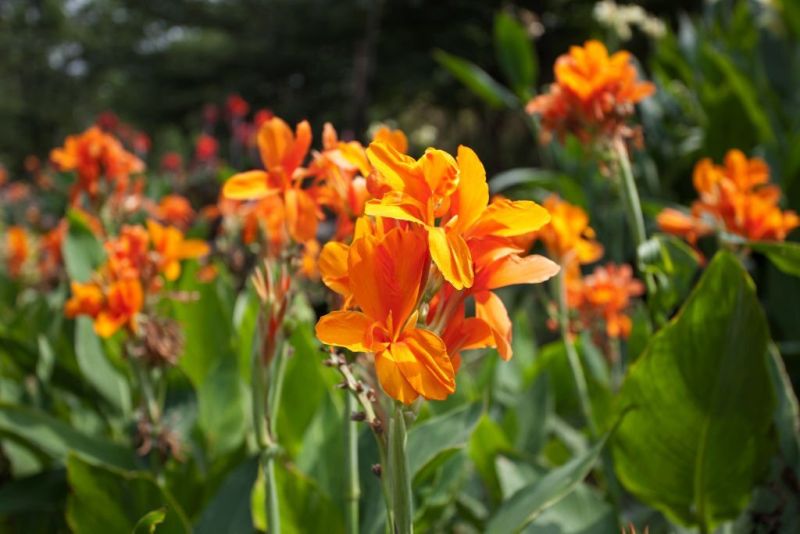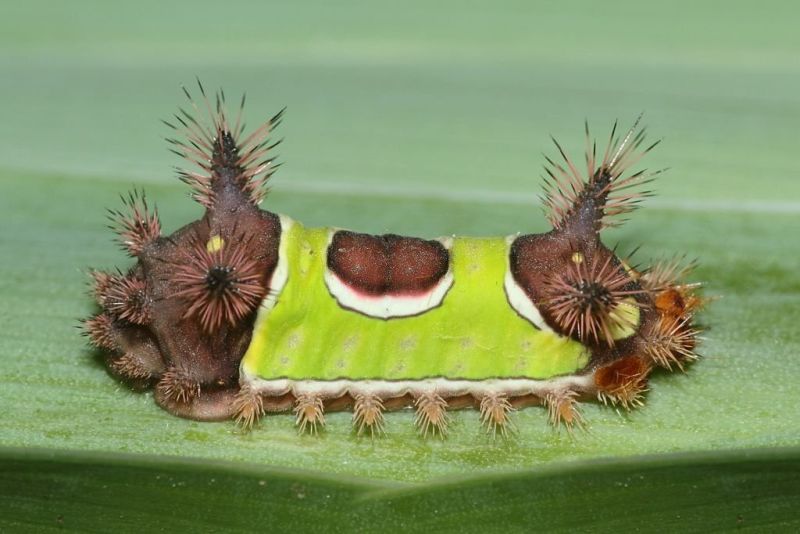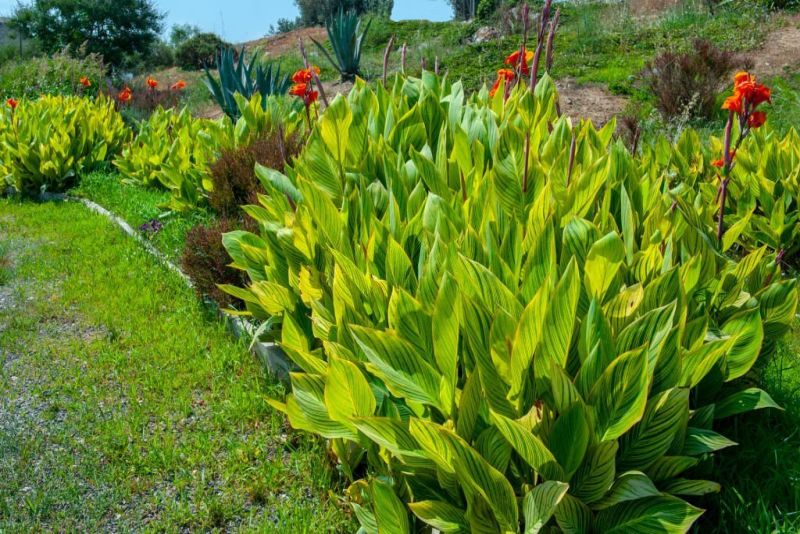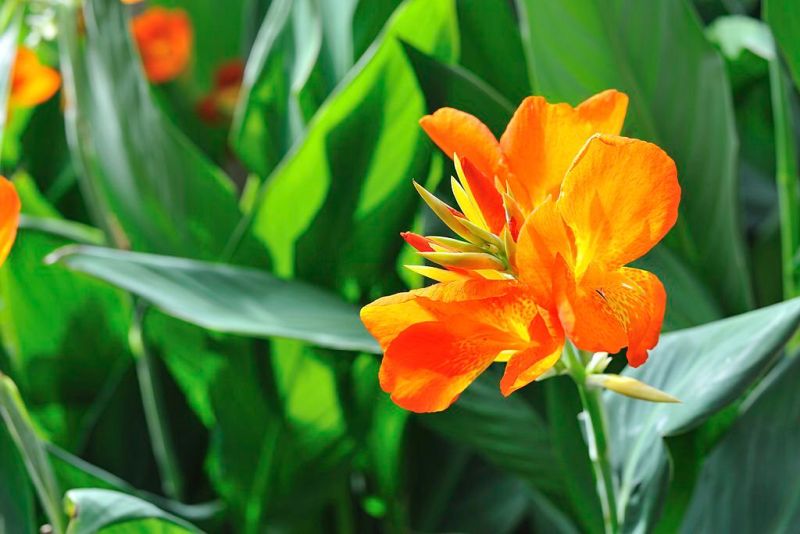Canna Lilies are one of the most popular flowers for home gardens, but they’re also a favorite snack for deer, rabbits and caterpillars.
Canna lilies are beautiful flowers that look great in a garden. They have a large bloom and an elegant shape, but they occasionally have issues with pests.
In this article, we’ll talk about the different types of pests that eat cannas and how to protect your plants from them!
Caterpillar
Caterpillars are one of the main predators of Canna Lilies. They will eat all parts of the plant including its leaves and flowers. They also like to eat other types of plants including tomatoes, peppers, eggplants, and many more!
The best way to prevent caterpillars from eating your Canna Lilies is by using pesticides or by planting them away from other plants that caterpillars might like to eat too.
What kind of caterpillars eat canna lilies?
Canna Leafrollers:
Canna leafrollers are the larval stage of Brazilian skippers. They feed on both the leaves and flowers of canna lilies, but they can also cause damage to other plants like hibiscus, marigolds and roses.
Saddleback caterpillars:
Saddleback caterpillars are another type of hairy worm that can damage your canna lilies by eating them or chewing holes in their leaves and stems. They are particularly fond of eating buds and new growth on your plants, so if you see these caterpillars around your flowers be sure to remove them quickly so they don’t cause too much damage!
Wooly Bear Caterpillars:
Wooly bear caterpillars are known to feed on canna lilies as well as other types of plants like roses and tulips. The wooly bear is the larval form of the Isabella Tiger Moth.
Corn Earworm Caterpillar:
Corn earworm caterpillar are the larvae of moths in the Noctuidae family. Corn earworm caterpillars are small worms that are grayish-brown in color with green markings along their sides and brown heads with black stripes on top.
They eat leaves of corn plants, vegetables such as squash and tomatoes, as well as flowers from other plants including petunias or hibiscus bushes. These caterpillars can grow up to 1 inch long when fully grown depending upon how much food they eat!
Treatment
If you’ve got caterpillars on your canna lilies, there are a couple of ways to treat them.
You can use neem oil or an insecticidal soap to kill them off. Be sure to read the label carefully and follow all instructions for the product you choose so that it doesn’t harm the plant or surrounding area.
Slugs & Snails
Slugs and snails are common pests of Canna lilies. These pests are attracted to the flowers of Canna lilies, which they will eat. After they have eaten their fill, the slugs and snails leave behind slime trails that attract other pests such as ants and earwigs. This is why it’s important to get rid of slugs and snails as soon as possible when you notice them in your garden.
If you notice caterpillars on your canna lilies, spray them with insecticide immediately so they don’t eat all of your plants’ leaves before they have a chance to bloom.
Spider Mites
Spider mites are a common pest for Cannas. The damage they do is not immediate, but rather they slowly weaken your plant’s immune system, which makes it more susceptible to other diseases and pests.
Spider mites are tiny and have eight legs; they are usually red or brown in color, but will usually appear black when viewed under a microscope. They’re notorious for sucking sap from plants, causing leaves to turn yellow or brown and then drop off altogether. Spider mites also cause deformation on the edges of leaves and flowers.
If left unchecked for long enough, spider mites can cause your plant to die completely—so it’s important to treat the problem quickly. You don’t need any special equipment or skills: just wash off all the leaves with water from your garden hose (you can also use soapy water if needed) until all visible signs of spider mites have been removed.
Aphids
They feed on the sap of these plants, and can be found on their roots and leaves. The aphids do not eat the entire plant, but leave behind small holes in the leaves, which can cause the plant to wilt.
The aphids use their long mouthparts to suck up the sap from the plant. This causes an imbalance in the nutrients that make up a cannas’ biology, as it prevents them from growing normally.
Aphids are attracted to cannas because they have a high sugar content, which keeps them alive until they find another source of food.
They reproduce quickly and spread quickly, so they can be difficult to control without pesticides or other methods of pest management. Aphids like stressed plants! Mix together one teaspoon of dish soap with one gallon of water and pour it into a spray bottle. Spray the plant thoroughly with this mixture every day until all signs of the aphids are gone. You can also use neem oil or horticultural oil as an alternative treatment for aphids on cannas.
Japanese beetles
Japanese beetles, also known as Popillia japonica, are a common garden pest that are known to eat Canna lilies. These destructive insects feed on the leaves of plants and chew holes in leaves, causing them to turn brown or black. They also eat flower buds, which prevents the plants from producing flowers or seeds. You can use organic methods to control this pest, but if you have an infestation, you may need to resort to chemical controls.
The best time to treat Japanese beetles is in the early morning when they are cold and sluggish. The University of California recommends using a pyrethroid insecticide such as bifenthrin or permethrin sprayed directly on the leaves where the beetles feed. If you prefer not to spray your plants with chemicals, try spraying them with soapy water or neem oil instead.
Mealybugs
They are a sap-sucking bug that lives in the soil and roots of plants, and they feed on the plant’s sugar-rich sap. Mealybugs also excrete a sticky substance that can damage the plant, causing yellowing leaves and stunted growth.
Fortunately, there are several ways to remove these pests from your plants. You can use neem oil to kill mealybugs, but make sure you don’t spray it directly onto the plant—this could burn its leaves and make them droop. Instead, pour some neem oil into a spray bottle or cup and apply it with a cotton swab or sponge. Then let it sit for three days before rinsing under running water; this will prevent any residue from harming your plant’s growth as well as killing any eggs laid by these pests which tend to hide in crevices.
Thrips
Thrips are the main predator of Canna Lilies. Adult thrips are small insects that feed on pollen and nectar. They can also feed on the leaves, stems, and roots of Canna Lilies. They can cause damage to plants by sucking out the plant’s juices and by excreting enzymes that break down cell walls in plants.
If you see tiny black or brown dots on the leaves and flowers of your Canna Lily plants, it’s likely that you have thrips. If you see yellowing leaves and flowers, it’s also likely that you have thrips.
Mice, Voles and other rodents
Canna lilies are popular in home gardens, but they can be a tempting treat for rodents. The most common culprits are mice and voles, which will dig the rhizomes. Rhizomes are essential to canna lilies because they store energy for the plant to use when it grows its next set of leaves.
If you see evidence that rodents have been digging your canna lilies, try putting out traps or fencing around them to prevent further damage.
FAQS
Do Deer Eat Canna Lilies?
Canna lilies are deer resistant and considered a good option for gardeners who want to keep deer out of their flower beds but they would love to munch on the young leaves. J
Do Rabbits Eat Canna Lilies?
Rabbits tend to prefer young leaves, but canna lilies are not on their list of favorite foods. If you have a rabbit in your garden, it’s important that you keep it fenced off from your canna lilies.[su_youtube url=”https://www.youtube.com/watch?v=mkZD5utxBDQ” width=”500″ height=”360″]
Conclusion
After reading this article, you should have a better understanding of what eats canna lilies. We hope that this information will help you protect your plants from pests and keep them healthy for years to come!

